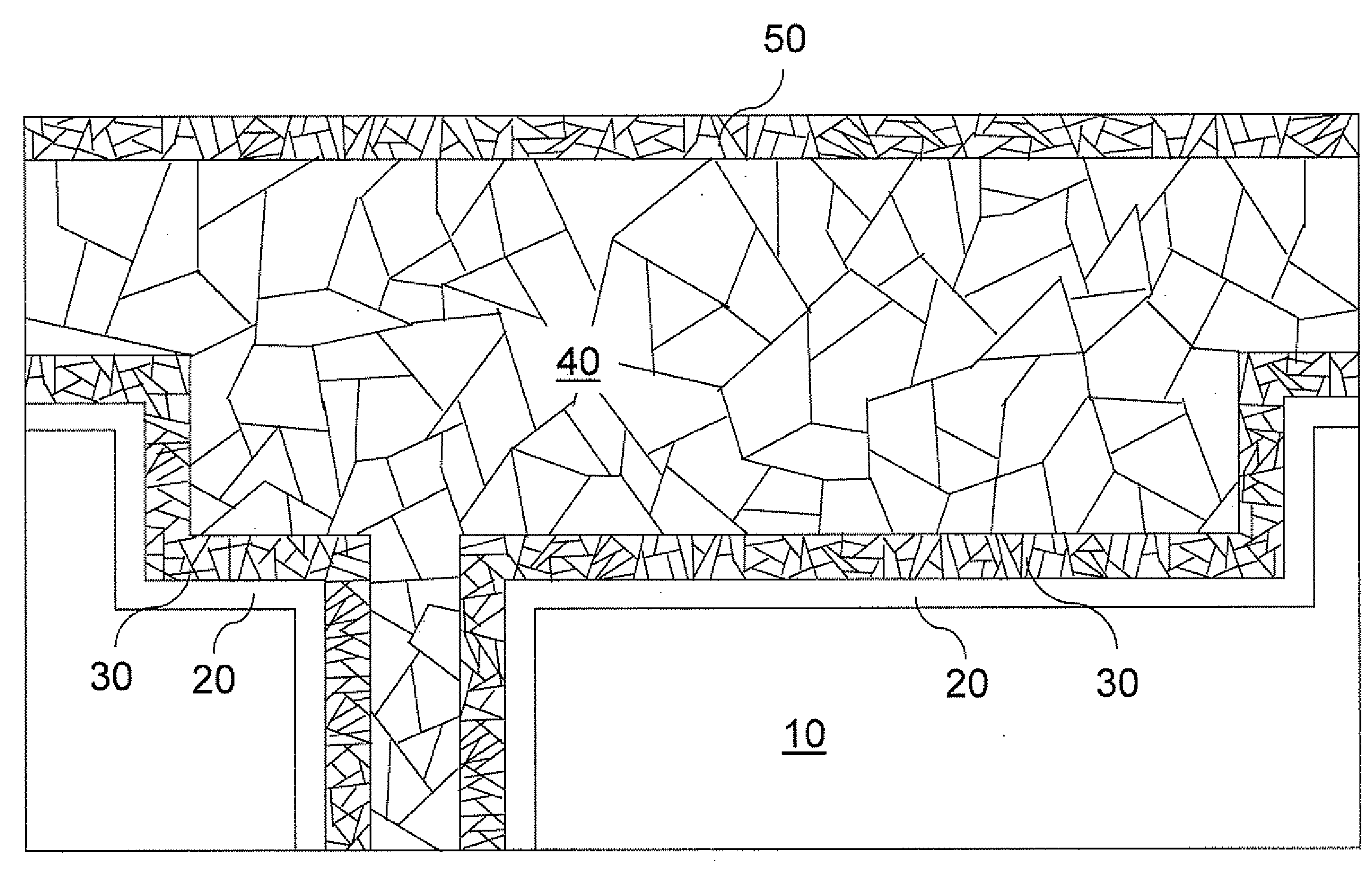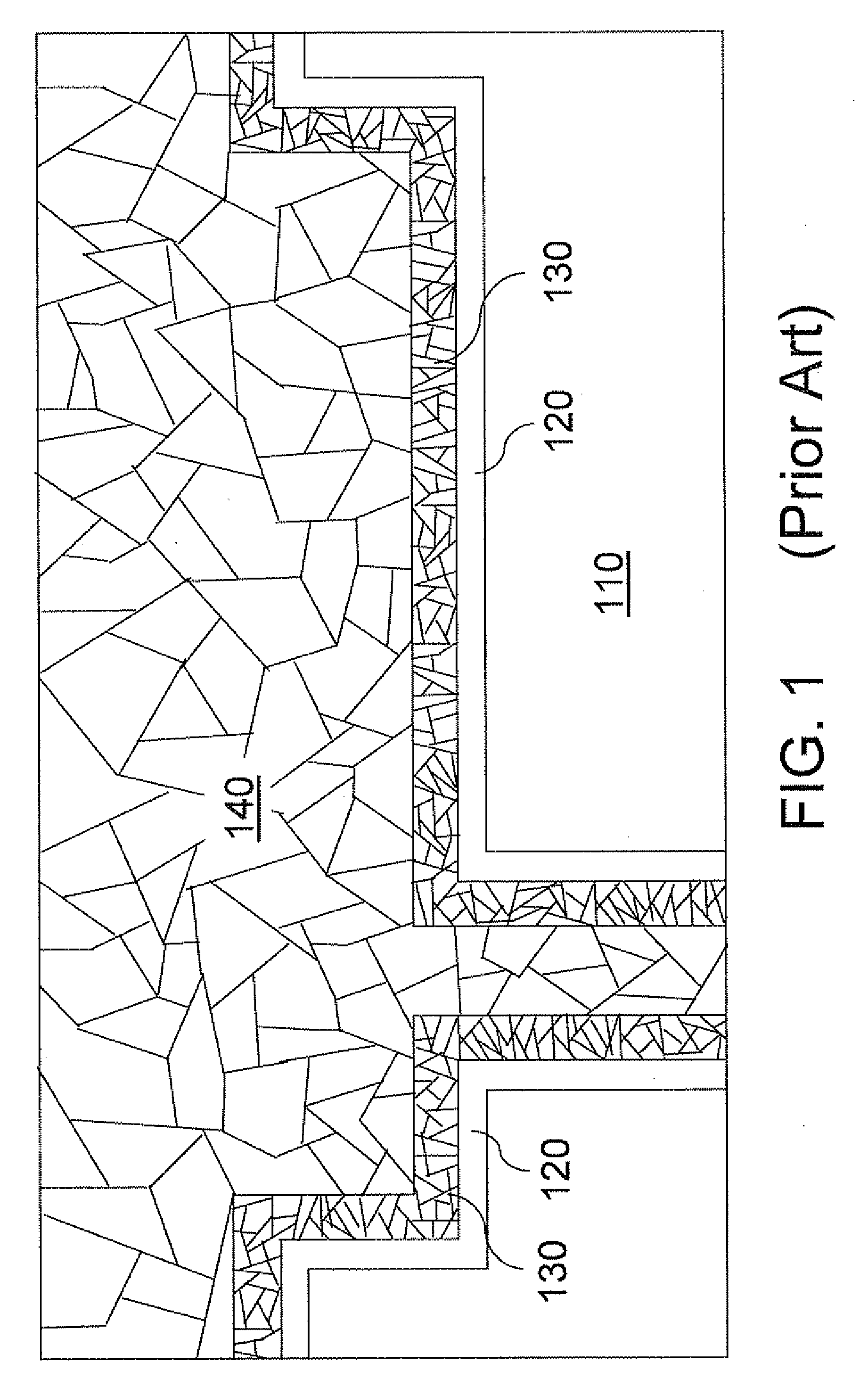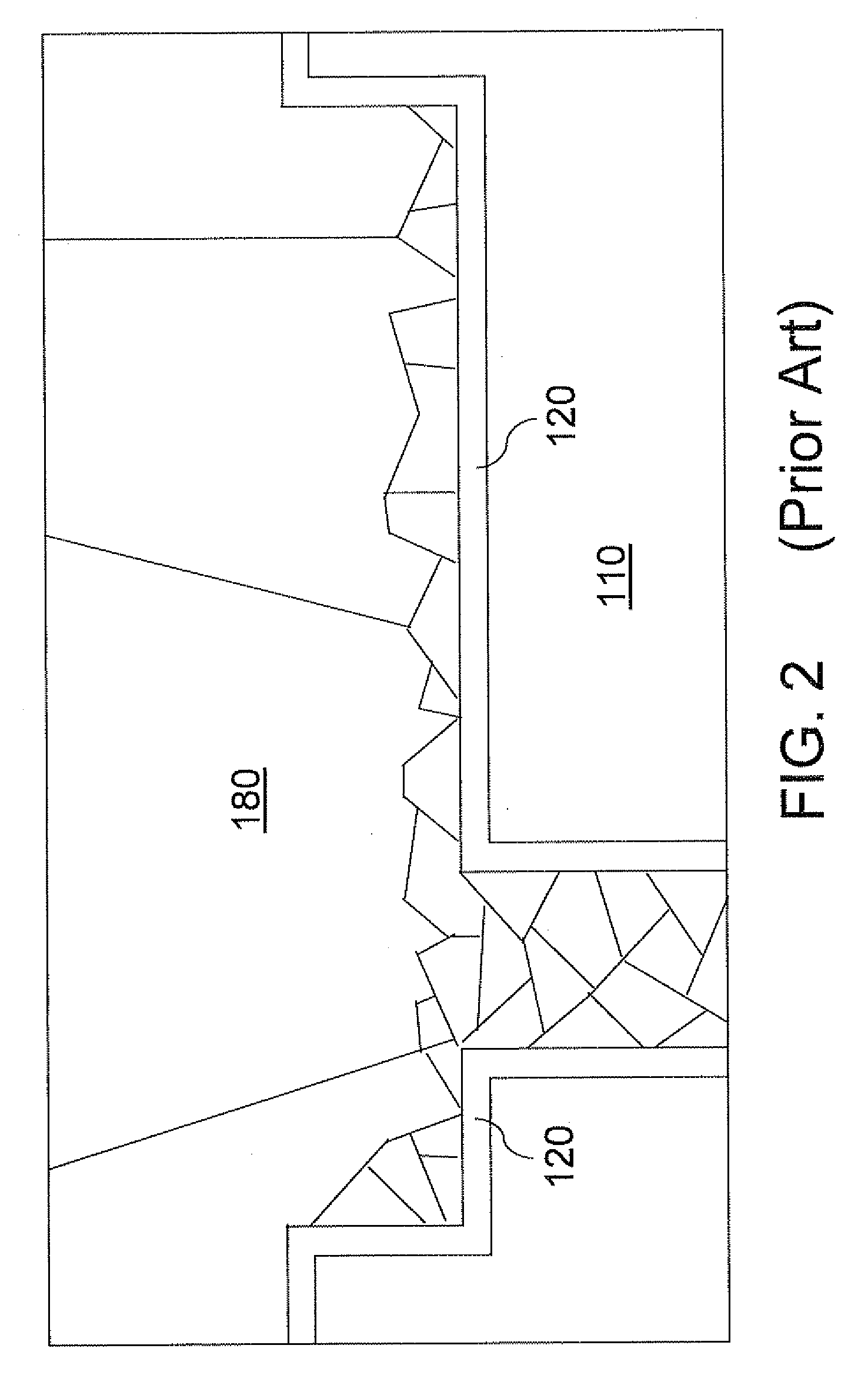Microstructure modification in copper interconnect structure
a microstructure and interconnect technology, applied in the field of metal interconnect structures, can solve the problems of non-bamboo microstructure of 90 nm copper interconnect technology, line failure, constraint on the design and layout of interconnect structures, etc., and achieve the effect of avoiding copper diffusion through grain boundaries and speeding up the ra
- Summary
- Abstract
- Description
- Claims
- Application Information
AI Technical Summary
Benefits of technology
Problems solved by technology
Method used
Image
Examples
Embodiment Construction
[0068]As stated above, the present invention relates to metal interconnect structures having large grain sizes at a bottom of a metal interconnect line and methods of manufacturing the same, which are now described in detail with accompanying figures. It is noted that like and corresponding elements are referred to by like reference numerals.
[0069]Referring to FIG. 4, a first exemplary metal interconnect structure according to a first embodiment of the present invention comprises a dielectric layer 10, a metallic barrier layer 20, a copper-cobalt alloy seed layer 30X, and a plated copper-containing layer 40. The dielectric layer 10 is typically formed on a semiconductor substrate (not shown) containing semiconductor devices (not shown). The dielectric layer 10 comprises a dielectric material such as silicon oxide, silicon nitride, organosilicate glass (OSG), SiCOH, a spin-on low-k dielectric material such as SiLK™, etc. The dielectric layer 10 may be porous, or non-porous. A via cav...
PUM
 Login to View More
Login to View More Abstract
Description
Claims
Application Information
 Login to View More
Login to View More - R&D
- Intellectual Property
- Life Sciences
- Materials
- Tech Scout
- Unparalleled Data Quality
- Higher Quality Content
- 60% Fewer Hallucinations
Browse by: Latest US Patents, China's latest patents, Technical Efficacy Thesaurus, Application Domain, Technology Topic, Popular Technical Reports.
© 2025 PatSnap. All rights reserved.Legal|Privacy policy|Modern Slavery Act Transparency Statement|Sitemap|About US| Contact US: help@patsnap.com



